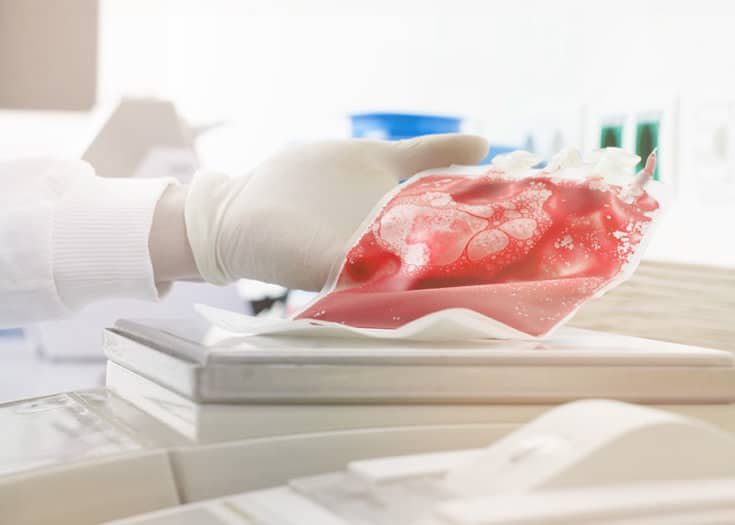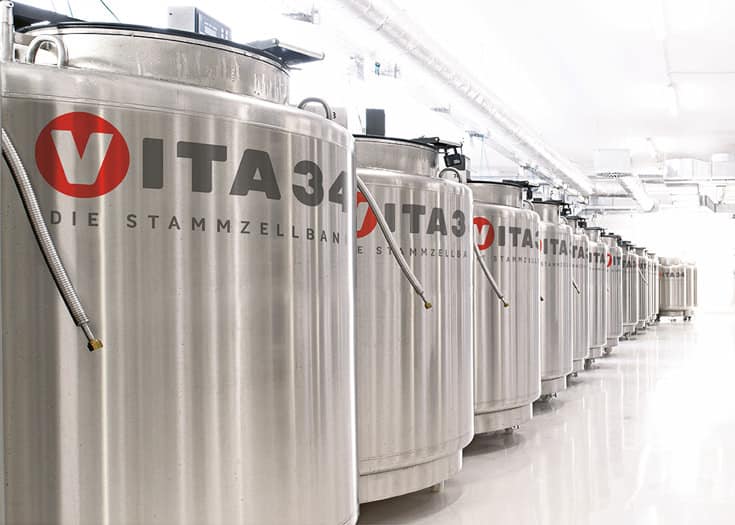All-rounders with special properties
There are various types of stem cells. They are classified according to three different methods:
- Classification by cell type
- Classification by ontogenetic age
- Classification by differentiation potential
Classification by cell type
The classification by cell types deals with the question, into which tissue or into which cell types the precursor cells can differentiate. A blood stem cell e.g. cannot become new bone or a nerve cell.
Hematopoietic stem cells
Another word for hematopoietic stem cells is blood stem cells. Their task is clear: These stem cells are responsible for the whole hematopoiesis. They have only a very limited life span. Every day, about 200 billion of erythrocytes (red blood cells), 120 billion of leucocytes (white blood cells), and 150 billion of thrombocytes (platelets) must be formed in an adult person.
Mesenchymal stem cells
Mesenchymal stem cells are the precursor cells of connective tissue. They develop into bone and cartilage as well as muscles, tendons, and ligaments. They are contained in particular in the umbilical cord tissue.

Human fat tissue is rich in mature fat cells and in adult mesenchymal stem cells and is therefore a valuable source for stem cells.
Neuronal stem cells
Neuronal stem cells become nerve cells, in particular brain cells. They are particularly interesting in researching neurodegenerative diseases like dementia or Parkinson’s, but also traumatic injuries, e.g. after strokes or serious head injuries caused by accidents. The hope in this regard is that neuronal stem cells may trigger repair processes and thus minimize damages.
Classification by ontogenetic age
Ontogenesis in biology is the development of the individual – from the egg cell to the sexually mature organism. The classification by ontogenetic age therefore differentiates embryonic, fetal, and adult stem cells. It follows the various stages of human development – from the fertilized egg cell to the adult.

Embryonic stem cells exist only for a short time. Adult stem cells divide throughout life
Embryonic stem cells
Embryonic stem cells act in the beginning of human life – long before birth. They are the “mothers of all cells” and can become any type of specific cell. However, they exist only for a very short time – namely during the development into the blastocyst, the state of the embryo about three to four days after fertilization. That means for medical application, you would have to grow embryos and destroy them afterwards. Embryonic stem cells are therefore highly controversial from the ethical point of view, and their production in Germany is prohibited.
Adult stem cells
Adult stem cells from bone marrow and other organs are the reservists of our organism. They create substitutions for dead cells. They cannot differentiate into all types of cells in an organism anymore like embryonic stem cells and they are not as viable as stem cells from umbilical cord blood. Furthermore, their later extraction is laborious, risky, and expensive.
Neonatal stem cells
Stem cells from umbilical cord blood belong to the adult cells, even though they are particularly young and potent. They are therefore their own class –neonatal stem cells.
Collecting umbilical cord blood at birth and storing it is the most simple and ethically inoffensive way of extracting young and potent and stem cells, thus securing them for medical precaution.
Further topics

Compare products and prices
As a precaution, store either the umbilical cord blood or the umbilical cord tissue after the birth of your child. We offer both at different prices and terms. Also a financing is possible. Optionally, you can also donate the umbilical cord blood.
Hello. Do you need further information?
Our guidebook for parents contains comprehensive information on the subject of cord blood storage. Order the guidebook by mail at no charge and without any obligation.





